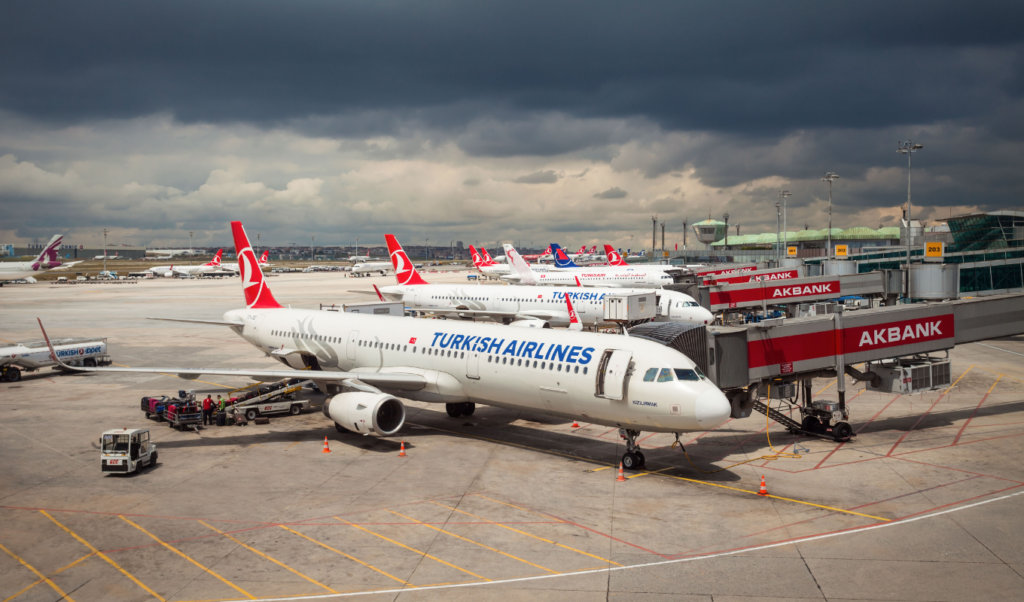Want to save big on flights and explore extra cities? Stopovers might be your answer. A stopover is a planned overnight break between flights, allowing you to visit a connecting city at little to no extra cost. Here’s why stopovers can save you money and make your travel more exciting:
- Cheaper Flights: Airlines often price connecting flights lower than nonstop ones to fill seats on less popular routes. For example, a nonstop flight to Tokyo might cost $2,211, but adding a stopover on the way could bring the price down to just $669.
- Explore More Cities: Many airlines offer stopover programs with perks like discounted hotels, free tours, or low-cost accommodations. Examples include Icelandair’s free Reykjavik stopovers or Qatar Airways’ $14 hotel packages in Doha.
- How It Works: Airlines use hub airports to streamline operations, making stopovers a cost-effective option. Flexible travelers can unlock savings by booking multi-city flights and being open to longer travel times.
Quick Tip: Use tools like KAYAK, Skyscanner, or Kiwi.com to find multi-city deals, and check airline stopover programs for added perks. Stopovers can save you up to 30% on airfare while letting you visit more destinations.
Keep reading to learn how to book stopover flights, find deals, and make the most of airline stopover programs.
Why Stopover Flights Cost Less Than Nonstop Flights
How Airlines Price Different Flight Types
Nonstop flights often come with a higher price tag because travelers are essentially paying for the convenience of saving time. On the other hand, connecting flights are usually cheaper as airlines aim to fill seats on less popular routes rather than leaving them empty. This approach allows flexible travelers to snag some great deals. Interestingly, airlines often base ticket prices on the demand for the final destination rather than the stopover city. This means you might find a cheaper fare to a city beyond your intended stop, even if it involves a layover.
Competition and Seat Availability
Layover flights open up a wide range of route combinations, which leads to fierce competition among airlines. To attract passengers, airlines frequently lower prices, especially on connecting flights. Modern planes now operate at approximately 90% capacity, a sharp increase from about 60% in the early 2000s. This higher load factor pushes airlines to sell remaining seats at discounted rates. Some carriers even design their business models around connecting passengers, slashing prices on long-haul routes to build customer loyalty and stay competitive.
Hub Airport Systems and Route Planning
Hub airports play a key role in how airlines price and plan their routes. Using a hub-and-spoke system, airlines funnel passengers through central hubs, allowing them to streamline operations and achieve cost savings. This efficiency often translates into discounted tickets for flights with stopovers at these hubs. Additionally, logistical factors like wind patterns and fuel efficiency can make itineraries with layovers cheaper than direct flights. In some cases, circle trips – where you fly from point A to B, then to C, and back to A – can cost less than a traditional round-trip ticket. Airlines use these discounts to fill seats during slower travel periods, making stopover flights an economical option for savvy travelers.

How to Find and Book Stopover Flight Deals
Search Tools for Multi-City Flights
Finding great stopover flights starts with using the right tools and knowing how to navigate multi-city search features. Many flight search engines offer this option, but prices can vary a lot depending on the platform.
Start by selecting the “multi-city” option on your booking site. This lets you view multiple legs of your trip at once. For example, Booking.com allows searches for up to five flights and sorts results by the lowest fares.
It’s a good idea to compare results across multiple search engines. Here’s how some of the top platforms stack up:
- KAYAK: Searches over 1,200 sources for flight options.
- Skyscanner: Provides global coverage for flights.
- Momondo: Offers filters for fees and other preferences.
- Kiwi.com: Uses virtual interlining to combine fares from different airlines.
The price differences can be surprising. For instance, a multi-city flight from San Francisco to London, Barcelona, Rome, and back to San Francisco might cost $1,097 on Google Flights but only $886 on Kiwi.com – a savings of over $200.
Best Practices for Finding Cheap Stopovers
Flexibility is key when hunting for affordable stopover flights. Here are some tips to help you save:
- Use flexible dates: Adjusting your travel dates can reveal cheaper fares.
- Search by city: Smaller airports often have discounted flights. Google Flights’ map search is particularly helpful for visualizing affordable routes.
- Book early: Reserving flights weeks or months in advance can lock in lower prices.
- Travel off-peak: Flying on low-demand days, like Tuesdays or Wednesdays, often costs less.
- Set price alerts: Get notified when fares drop for your preferred routes.
If you find a deal on a search engine, check the airline’s website directly. Airlines sometimes offer exclusive deals that aren’t available through third-party platforms.
When looking for stopover flights, use filters to set your desired layover duration. Searching for “extra long layovers” can sometimes uncover cheaper fares. You can also contact airlines directly to extend a layover into a full stopover – often for up to ten days.
Budget airlines may offer tempting prices, but make sure to review their baggage and fee policies before booking. Additionally, some travel aggregators bundle flights with stopovers into package deals that can be worth exploring.
Combine these strategies with curated alerts to maximize your savings.
Using Dollar Flight Club for Stopover Deals
Dollar Flight Club can make finding stopover deals easier by sending curated email and SMS alerts. They monitor thousands of routes to find discounts that might slip under your radar.
Members receive alerts for both domestic and international stopover deals, with discounts reaching up to 90%. The Premium plan ($69/year) covers up to four airports, while Premium+ ($99/year) adds SMS alerts for time-sensitive offers.
This service is especially handy for spotting mistake fares or flash sales, which often include deeply discounted connecting flights. By manually curating deals, Dollar Flight Club ensures you’re notified of unique stopover opportunities without the hassle of sifting through endless search results.
You can also customize your profile by prioritizing up to 10 dream destinations. This way, the service specifically looks for stopover routes that include those cities. Many of these exclusive deals involve complex itineraries with stopovers that standard search engines might miss, potentially saving you hundreds compared to booking direct flights or piecing together a multi-city trip on your own.

Airlines With Free Stopover Programs
Airlines Offering Stopover Programs
Stopover programs are a clever way airlines fill seats while giving travelers the chance to explore a connecting city without paying extra airfare. These programs allow you to extend a layover from just a few hours to several days, often at no additional cost.
Turkish Airlines offers a free night in a 4-star hotel for economy passengers, with added perks for business class travelers, on stopovers of at least 20 hours in Istanbul.
Icelandair allows passengers to enjoy up to seven days in Reykjavik at no extra airfare on transatlantic flights, making Iceland an easy addition to any European trip.
TAP Air Portugal provides stopovers in Lisbon or Porto for up to 10 days without additional charges, perfect for breaking up long transatlantic journeys between North America and Europe.
Qatar Airways features discounted stopover packages in Doha for transits lasting between 12 and 96 hours. Rates for four-star hotels start as low as $14 per night.
Other airlines with noteworthy stopover programs include Copa Airlines, which offers Panama City stopovers lasting one to seven days; Iberia, whose “Hola Madrid” program allows one to nine nights in Madrid; and PLAY Airlines, which includes free Reykjavik stopovers for up to 10 days. Many of these programs also come with extra perks, helping travelers save even more.
Free Hotels, Tours, and Transportation
Some airlines go beyond discounted fares, offering additional benefits to make your stopover even more enjoyable – and cost-effective.
Ethiopian Airlines provides free accommodation at the Ethiopian Skylight Hotel, along with airport transfers and breakfast, for layovers lasting between 8 and 24 hours in Addis Ababa.
Air China offers complimentary hotel stays and airport transfers for international passengers with stopovers lasting 6 to 30 hours. Premium travelers can even access luxury transit hotels.
Iberia’s Hola Madrid program sweetens the deal with discounts on hotels, airport transfers, museum tickets, and a free two-day transport card.
Royal Jordanian Airlines includes a variety of benefits in its Zuwar Stopover Program, such as transportation, site entrance fees, dining options, and a complimentary layover package covering accommodation, meals, and transfers.
Qatar Airways also enhances its stopover packages through the Discover Qatar program, offering tours, excursions, and beach access, with breakfast options included in various packages.
How to Use Airline Stopover Policies
To make the most of these stopover programs, follow these tips to ensure a smooth booking process:
- Research hub locations and connection times. Stopovers are typically available at airline hubs, with minimum connection times ranging from 8 hours (Ethiopian Airlines) to 20 hours (Turkish Airlines).
- Use the multi-city booking option. When booking through an airline’s website, select the multi-city option and carefully review the fare rules. Some airlines restrict stopovers to specific routes or allow them only on the outbound or return leg.
- Apply in advance. For airlines like Turkish Airlines, reservations for stopover benefits must be made at least 72 hours before your first flight by emailing your booking details to the airline’s designated contact.
- Contact the airline directly. If you’re unsure about eligibility or want to extend a regular layover into a full stopover, contact the airline for assistance.
- Double-check all details. After booking, confirm with the airline that you meet the criteria for the stopover benefits and ensure all promised perks are included.

Stopover Flights: Pros and Cons
Benefits vs. Drawbacks Comparison
Choosing between a stopover flight and a nonstop option often boils down to balancing cost savings and travel time. Stopover flights can be a great way to save money and explore additional destinations, but they come with trade-offs that may not suit every traveler.
Stopover flights typically save travelers 20–30% compared to nonstop routes. For instance, a nonstop flight from New York to Los Angeles might cost $400, whereas opting for a stopover could bring that fare down to $300. Similarly, a direct London-to-Bangkok flight priced at £720 could drop to £430 if you include a stopover in Istanbul.
Beyond cost savings, stopovers create opportunities for adventure. Many airlines offer programs that include discounted accommodations or city tours, making it easy to explore a new destination during your layover. Additionally, breaking up a long journey can help reduce travel fatigue, especially on flights lasting six hours or more. Stretching your legs, grabbing a meal, or even taking a quick nap during a stopover can make the overall trip feel less grueling.
That said, stopover flights aren’t without their challenges. They often extend your travel time by up to 30%, which can be a dealbreaker if you’re on a tight schedule. There’s also a higher risk of delays, missed connections, and lost luggage when you add extra flight segments to your journey. Weather disruptions, especially during peak seasons or winter months, can make these risks even more pronounced. On top of that, navigating visa or entry requirements for the stopover city can complicate your plans, as some countries require transit visas even for short layovers.
| Factor | Stopover Flights | Nonstop Flights |
|---|---|---|
| Cost | Cheaper, saves 20–30% | More expensive, about 25% higher |
| Travel Time | Longer, up to 30% more | Faster, direct to destination |
| Convenience | Higher risk of delays | No connection concerns |
| Destinations | Access to more destinations | Limited to direct routes |
| Flexibility | Great for flexible travelers | Best for tight schedules |
| Experience | Explore stopover cities | No additional experiences |
Ultimately, the choice between stopover and nonstop flights depends on your priorities. If you’re budget-conscious and open to a longer journey, stopovers can be a rewarding way to save money and see more of the world. However, if your time is limited or you prefer a seamless travel experience, the higher cost of nonstop flights might be worth it. Just be sure to weigh your options carefully, considering factors like visa requirements, potential delays, and how much extra time you’re willing to spend in transit.
Conclusion: Save Money With Smart Stopover Planning
Main Points to Remember
Stopovers are a fantastic way to stretch your travel budget while adding extra adventures to your trip. As highlighted in this guide, opting for flights with stopovers can often lead to lower airfares compared to nonstop options. Airlines frequently price connecting flights more competitively due to factors like seat availability, competition, and the efficiency of their hub airports. This means you can explore additional destinations without a big jump in cost.
To make the most of this, a bit of strategy goes a long way. Flexibility is key – use multi-city search tools to explore alternative routes, and look into airlines that offer generous stopover programs. Many major carriers provide perks like free hotel stays or extended layovers, which can help keep extra expenses in check.
Don’t forget the practical side of things: check visa requirements for your stopover destination and pack a carry-on with essentials to avoid any hiccups. While stopovers might add some travel time and come with connection risks, the savings and the chance to experience a new place often make it well worth the effort.
Tools like Dollar Flight Club can simplify the process by sending you curated alerts for discounted stopover flights via email or SMS. These tools can help you spot deals you might not have found on your own.
FAQs
How can booking flights with stopovers help me save money?
Booking flights with stopovers can be a clever way to save on travel expenses. Start by using multi-city search tools to compare fares – stopover flights are often less expensive than direct ones. Plus, many airlines have special stopover programs that sweeten the deal with perks like discounted hotel stays or even free city tours, giving you a chance to explore an extra destination at no extra cost.
To snag these deals, keep your travel dates flexible and sign up for flight deal alerts from services like Dollar Flight Club, which can help you spot affordable stopover options. Before finalizing your booking, double-check the airline’s stopover policies and make sure your travel documents are in order for the extra destination. With a bit of planning, stopovers can transform your trip into an affordable and memorable adventure!
What are the pros and cons of booking stopover flights instead of nonstop flights?
Booking stopover flights can come with some great perks. For one, they’re often much cheaper than nonstop options, which is a big win for travelers on a budget. Plus, a stopover might give you the chance to explore a new destination during your layover – turning a simple flight into a mini adventure. And if you’re on a long journey, having a break to stretch your legs and recharge can be a welcome relief.
That said, there are some downsides to keep in mind. Stopover flights usually mean longer overall travel times, which can be exhausting. There’s also a greater chance of missed connections or delays, and your luggage might be more likely to get misplaced during transfers. Balancing these pros and cons can help you figure out if the savings and added experiences are worth the potential hassles.
What airlines offer free stopover programs, and what benefits do they include?
Many airlines offer free stopover programs, giving travelers the chance to explore an extra destination during their journey without paying additional airfare. Some well-known airlines with these programs include Turkish Airlines, Emirates, Qatar Airways, Iberia, Air Canada, and Aer Lingus.
These stopover programs often come with enticing perks like free hotel accommodations, access to airport lounges, visa support, and extended layovers. This means you can enjoy more time in a new city and make the most of your trip without stretching your budget.










